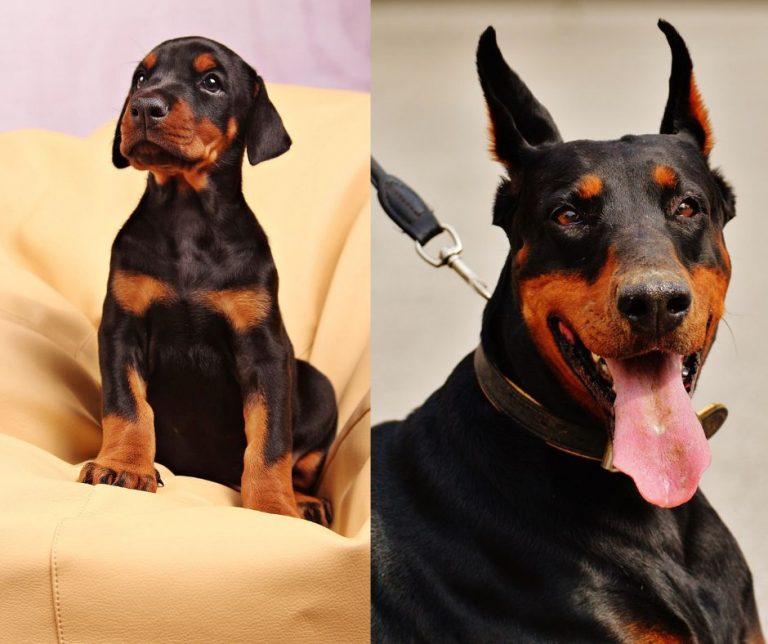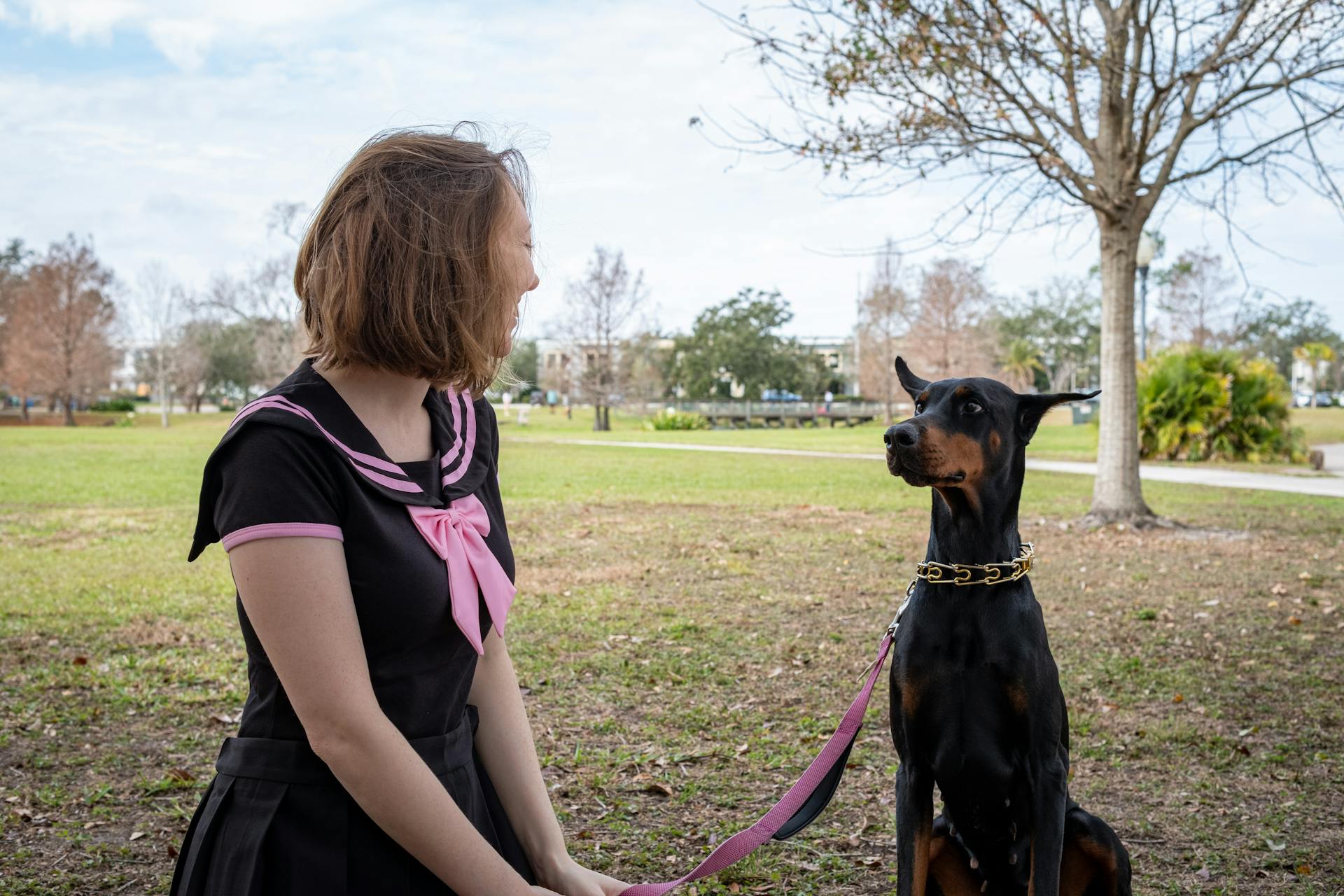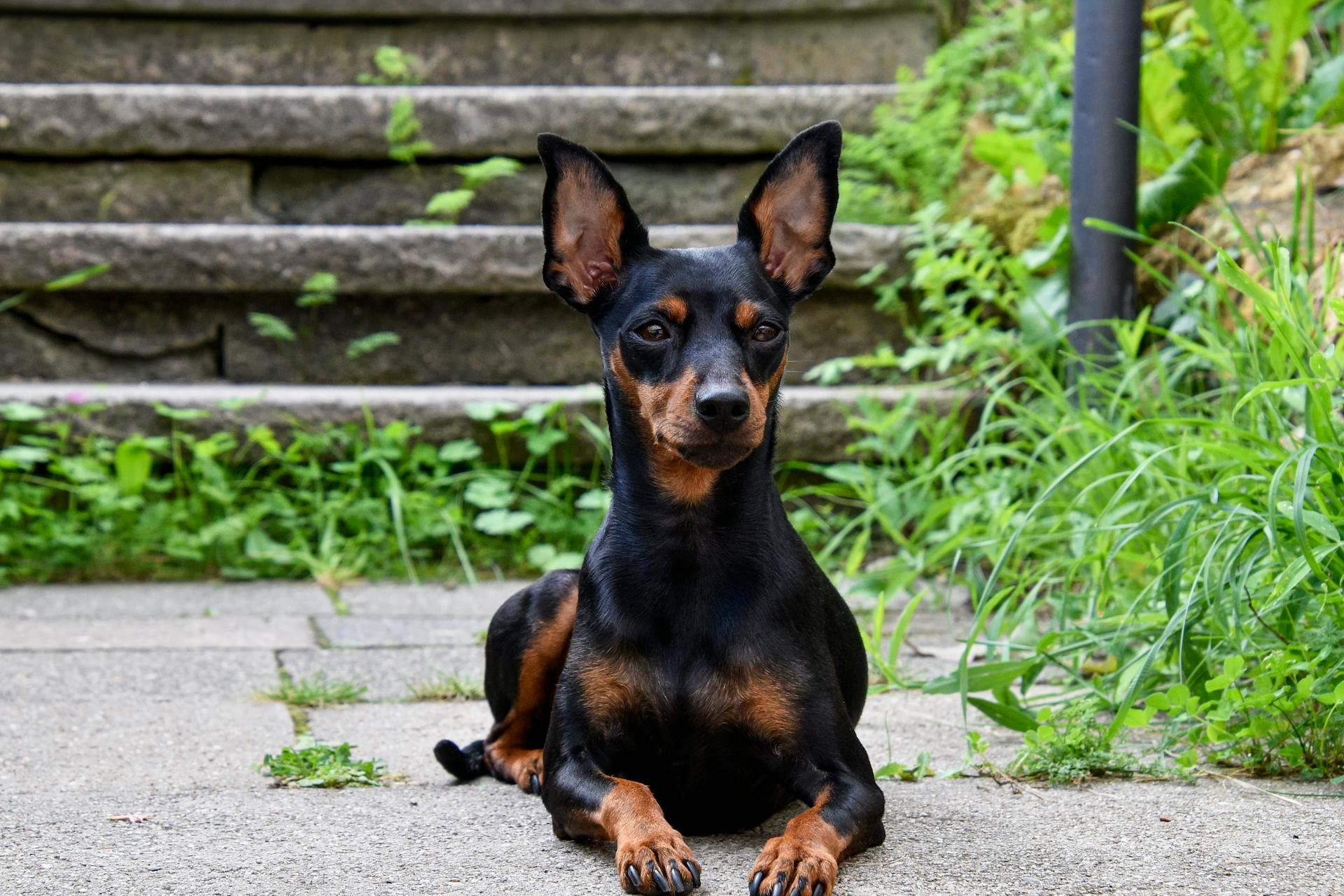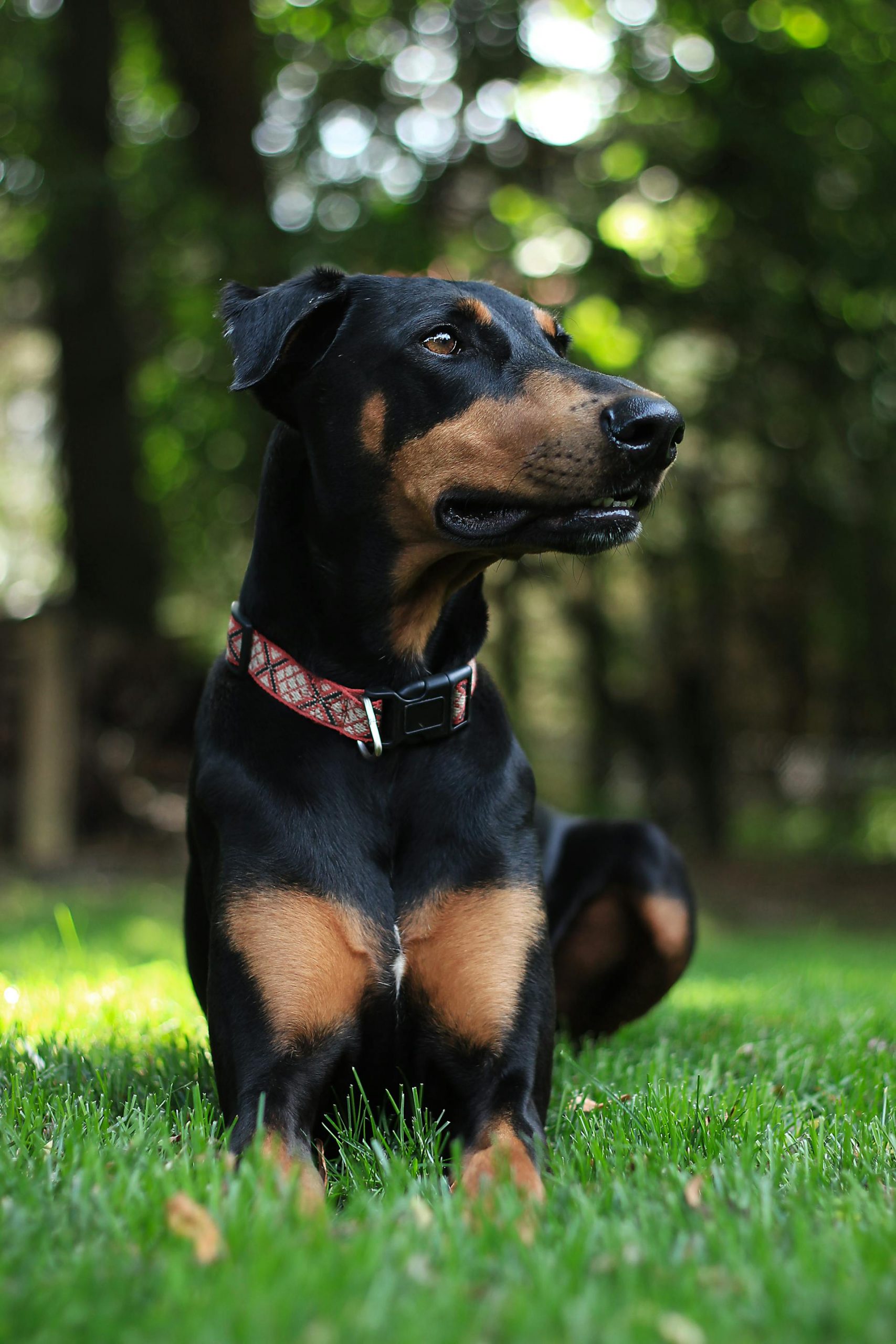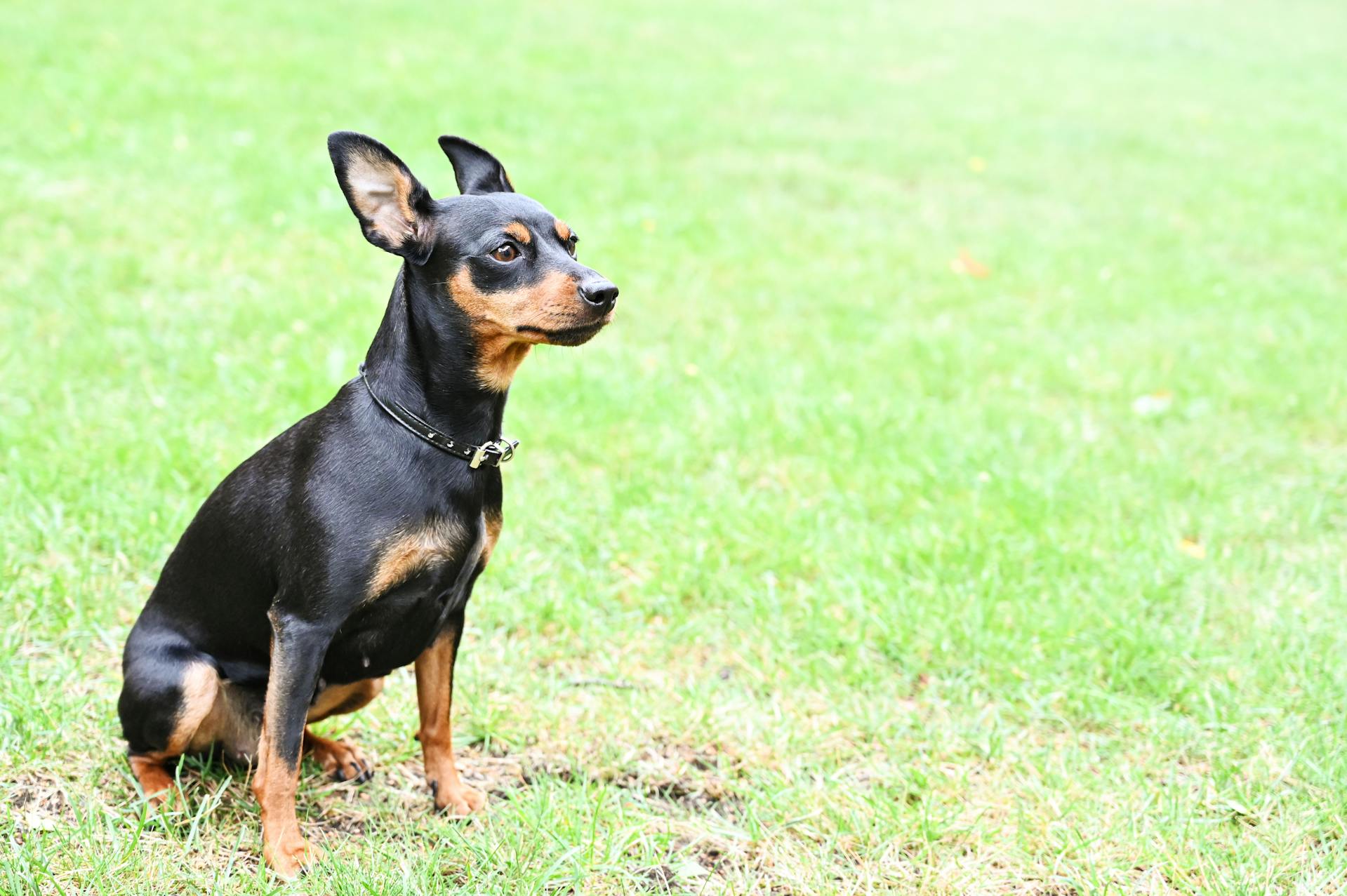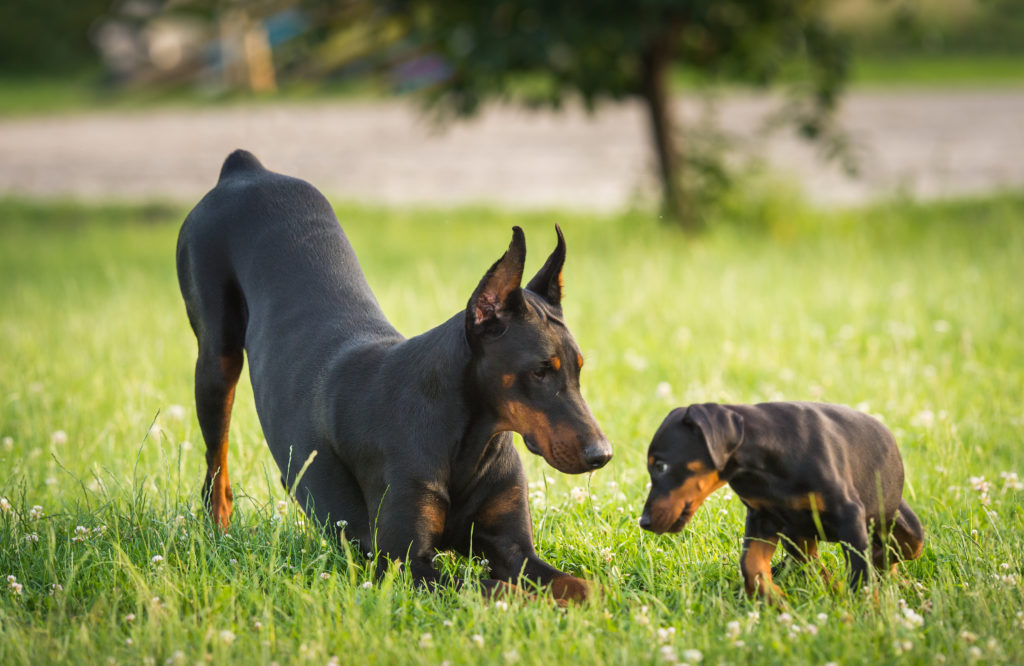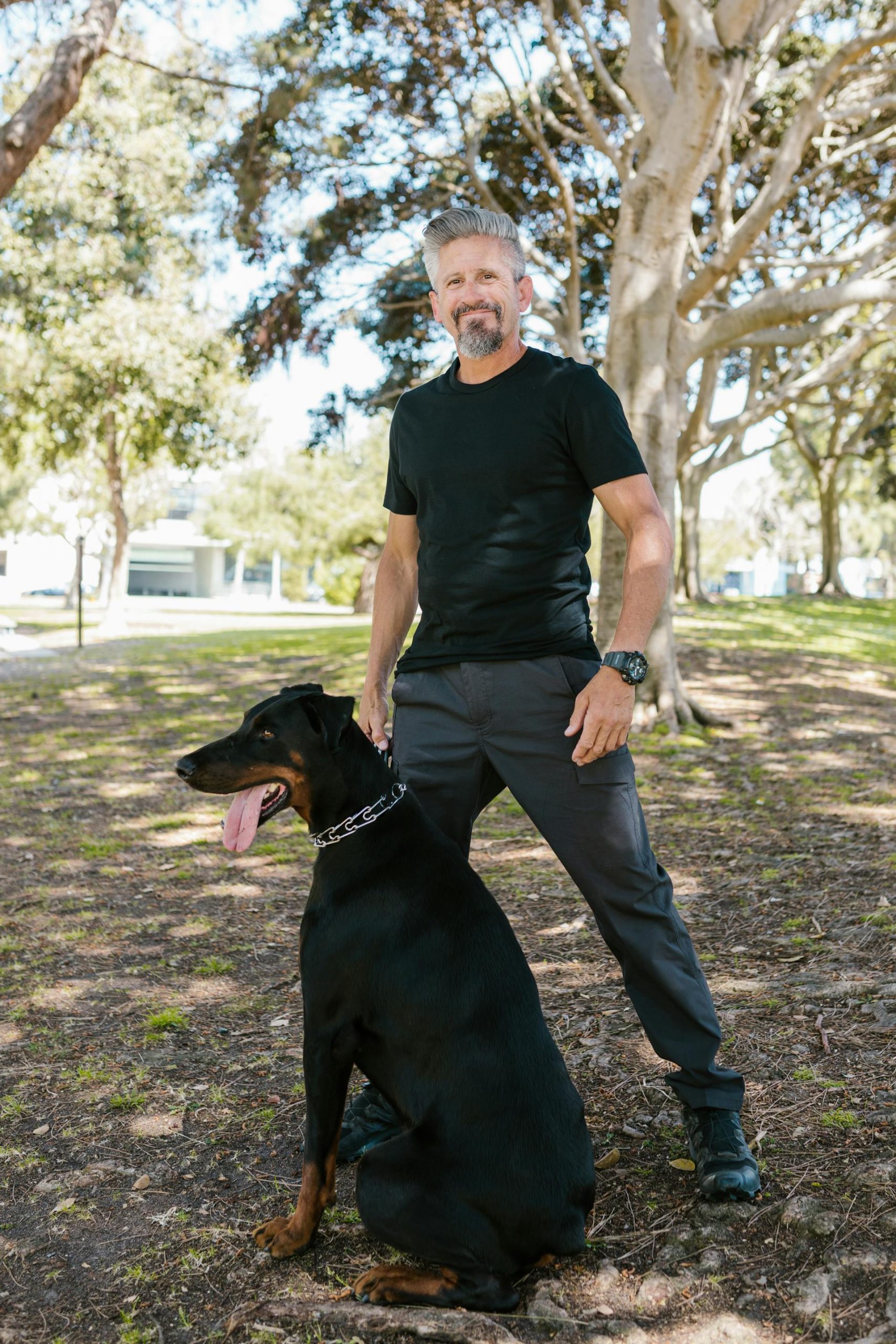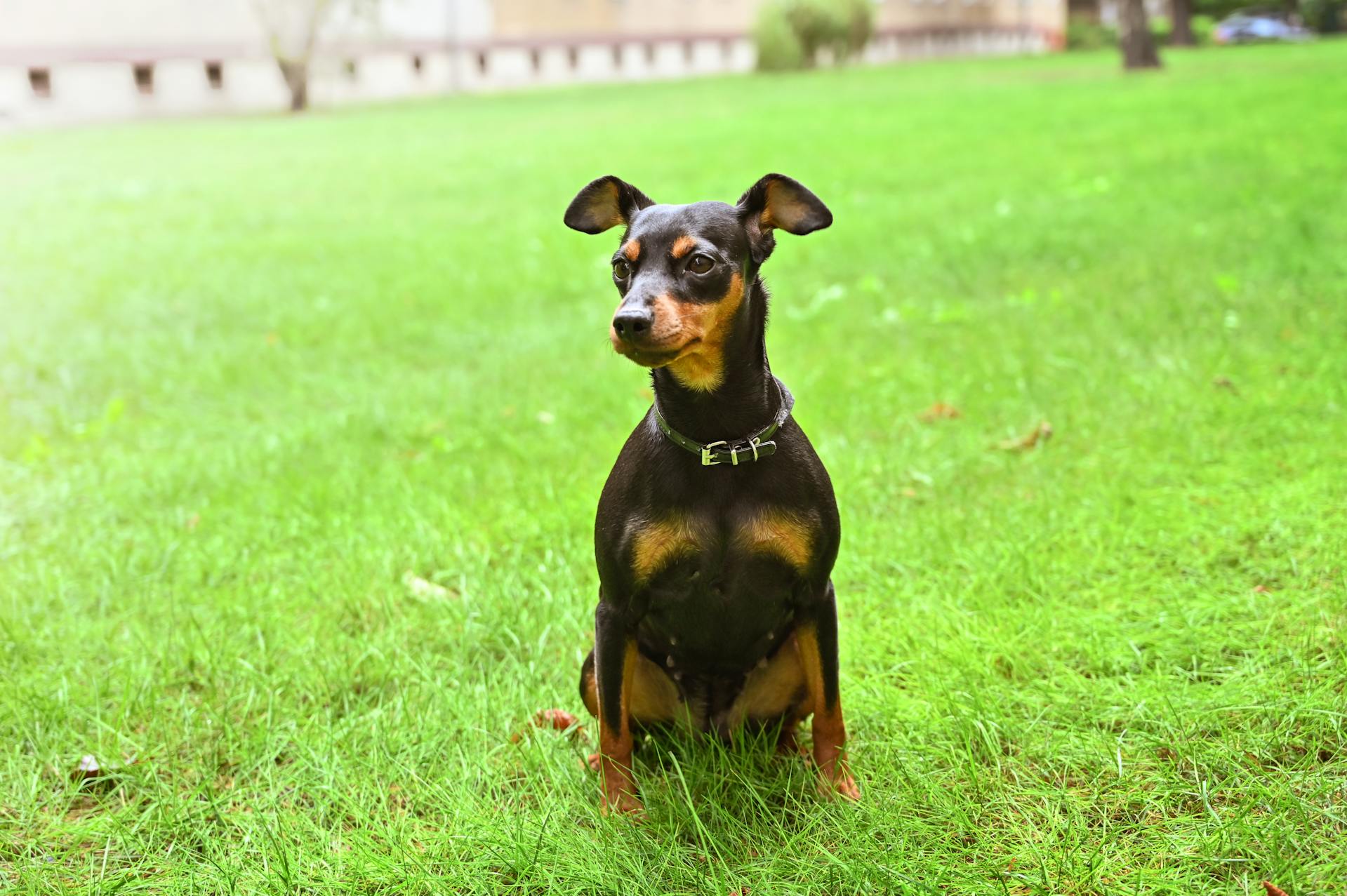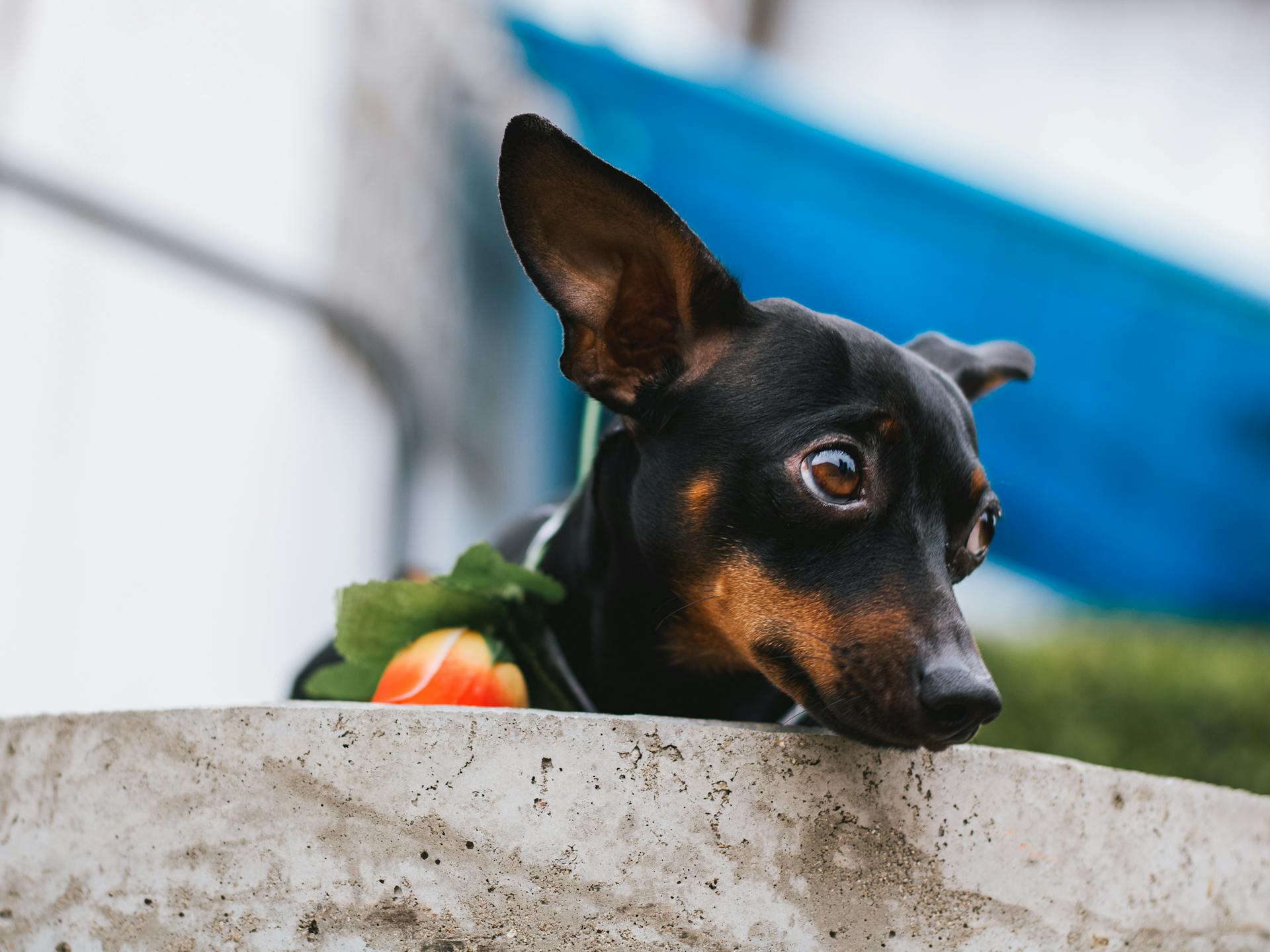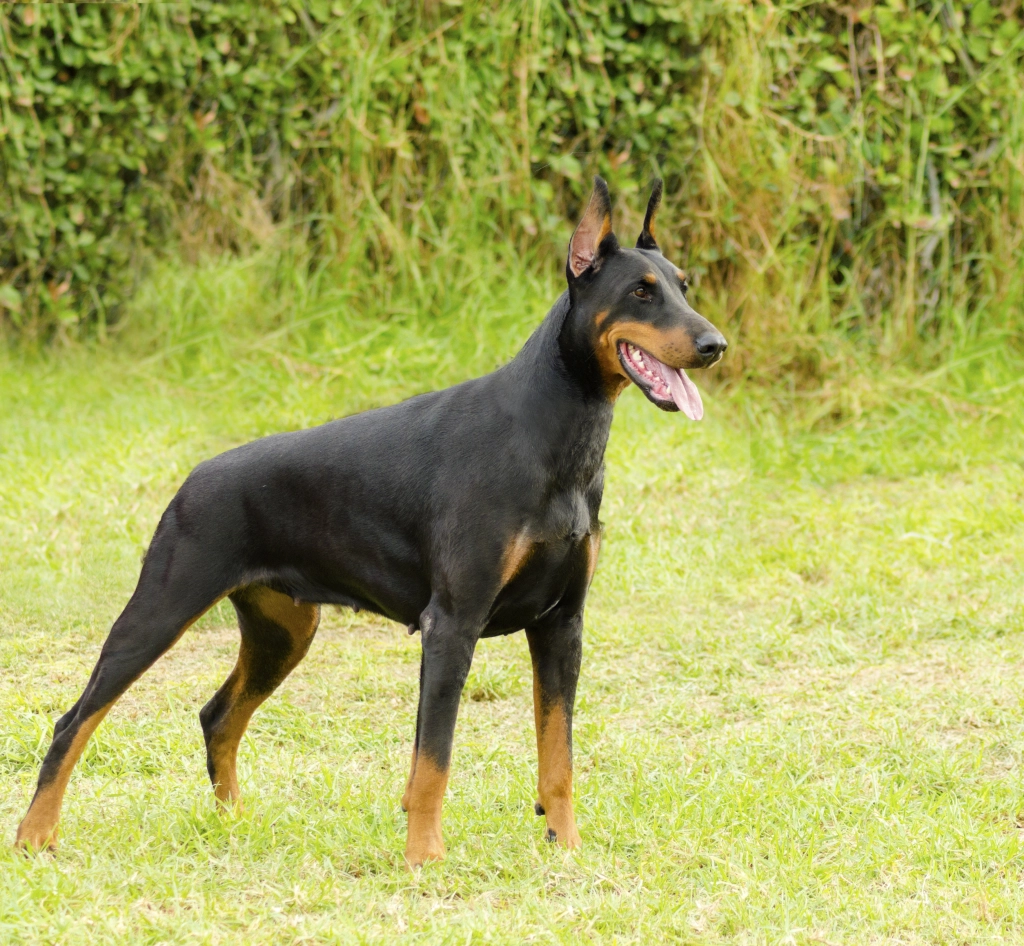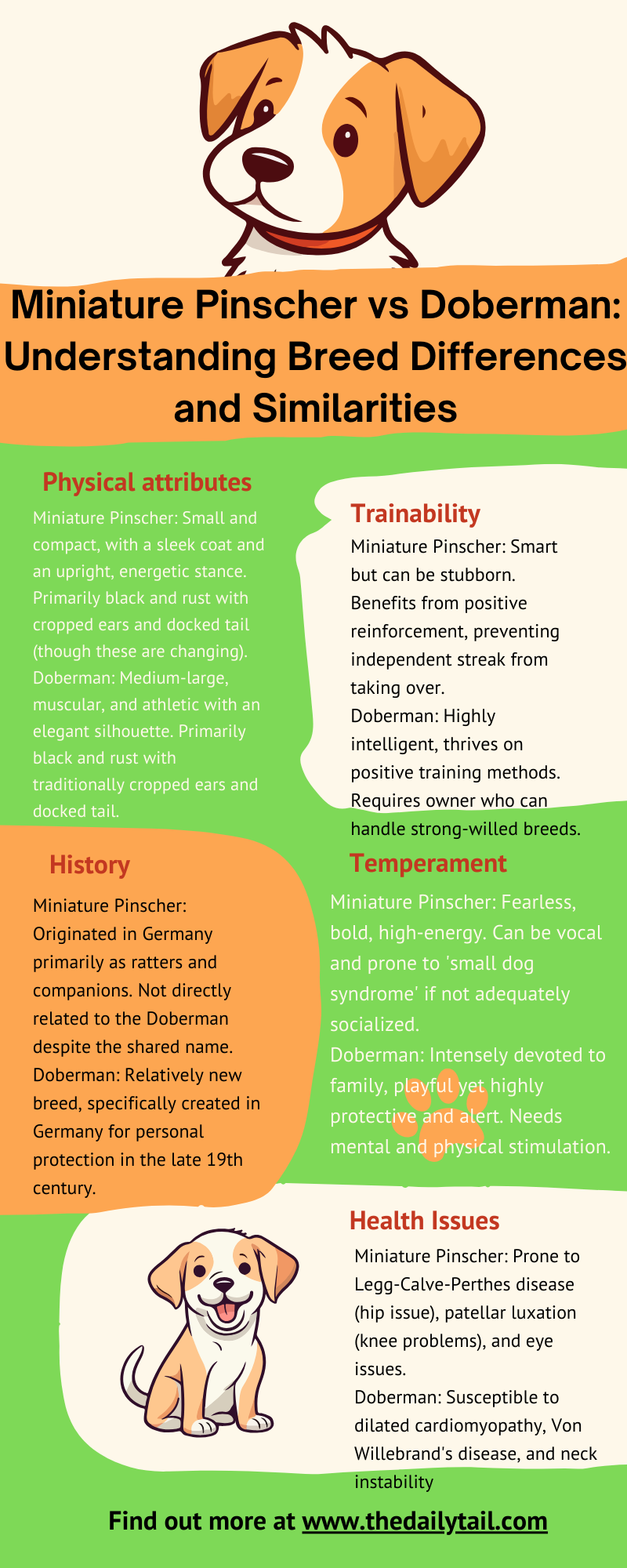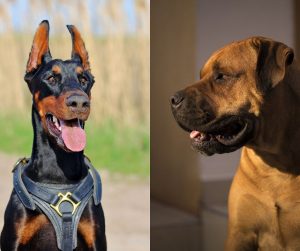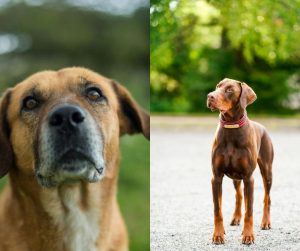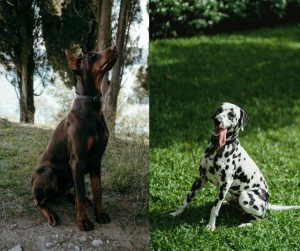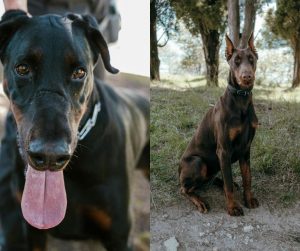As someone who’s shared my life with pocket-sized powerhouses and sleek guardians, I’ve seen the fascinating spectrum of the ‘pincher’ world. Let’s compare the Miniature Pinscher and the Doberman
The Miniature Pinscher and the Doberman Pinscher are distinct breeds despite common misconceptions linking their appearances. The Doberman, often simply referred to as Doberman in many countries outside the United States and Canada, is a robust working dog with roots connecting to the Rottweiler and German Shepherd, well-known for its guard dog capabilities and poised stature.
Weighing in at around 100 pounds and standing approximately 26 inches tall at the shoulders, the Doberman portrays a combination of strength, endurance, and agility.
In contrast, the Miniature Pinscher is a compact, spirited companion dog, originally bred for hunting small pests. Unlike the Doberman, it shares more of its heritage with breeds like the Dachshund and Italian Greyhound. Typically the Miniature Pinscher stands about 12 inches in height and weighs between 8 to 10 pounds, making it significantly smaller than the Doberman. Despite their size differences, both breeds exhibit high energy levels requiring ample exercise to maintain their physical and mental health.
Understanding the behavioral traits and care needs of these dogs is crucial for prospective owners. Dobermans are protective and require strong leadership, whereas Miniature Pinschers are assertive and can display an independent streak. Training and socialization are essential for both breeds to prevent unruly behavior.
While their visual similarities may confuse some, the Miniature Pinscher and Doberman are suitable for different lifestyles and living conditions due to their varied sizes and characteristics.
Let’s take a look at the Miniature Pinscher vs Doberman dog breed comparison.
Breed Origins and History
In the canine world, the Miniature Pinscher and the Doberman Pinscher are two breeds with distinct histories and origins in Europe. Their development reflects the skills and purposes that breeders targeted within different time periods and regions.
Origin of Miniature Pinscher
The Miniature Pinscher, commonly referred to as the Min Pin, is believed to have originated in Germany. Despite its resemblance to the Doberman Pinscher, the Min Pin is not a downsized version of it, but rather an older breed with a history possibly dating back to the 1600s.
Breed composition is thought to include a blend of the German Pinscher, Dachshund, and Italian Greyhound. The intention behind breeding such dogs was likely to produce an efficient ratter and alert companion. Historical documentation points to their being known as “reh pinscher” in the early 19th century, due to their stag-like appearance.
Origin of Doberman Pinscher
The Doberman Pinscher is a more recent breed compared to the Min Pin, having been created in the late 19th century by a German tax collector named Louis Dobermann. His aim was to breed an imposing guard dog that could also keep him company. The exact breeds that went into creating the Doberman are not precisely known, but it is widely recognized that the German Pinscher, Rottweiler, and possibly the now-extinct old German Shepherd played significant roles.
This breed made its first appearance in a show ring in 1897, and its capabilities quickly garnered it acclaim in Europe before spreading in popularity across the world.
Physical Characteristics
When comparing the physical characteristics of the Mini Pinscher and the Doberman, distinct differences in size, coat, and breed-specific features are apparent. Both breeds have a proud carriage and an athletic look but vary greatly in their physical dimensions and visual presence.
Size Comparison
The Miniature Pinscher and the Doberman exhibit significant differences in terms of size.
- Miniature Pinscher:
- Height: 10-12 inches
- Weight: 8-11 pounds
- Doberman:
- Height: 24-28 inches
- Weight: 70-100 pounds
The size difference between the two breeds is considerable, with the Doberman being notably taller and heavier.
Coat and Appearance
Both breeds have smooth, short coats, but they vary in grooming needs and appearance.
- Miniature Pinscher:
- Coat: Short and easy to groom
- Colors: Solid red, stag red, black and rust, chocolate and rust
- Doberman:
- Coat: Also short, but may require more frequent grooming to maintain sheen
- Colors: Black, red, blue, and fawn, all with rust markings
Despite the similar coat texture, the Doberman’s larger body may necessitate more grooming effort to maintain its sleek appearance.
Breed-Specific Features
The earmarks of each breed go beyond just size and coat, focusing on their distinct physical traits.
- Miniature Pinscher:
- Build: Sturdy and compact
- Ears: Often left natural, they stand erect
- Eyes: Dark and oval-shaped
- Doberman:
- Build: Powerful and muscular with a deep chest and strong neck
- Ears: Frequently cropped, can be natural
- Eyes: Almond-shaped with an alert expression
Both breeds present breed-specific features that are integral to their unique appearance, which includes a proud neck carriage and alert, intelligent eyes.
Temperament and Personality
While both the Miniature Pinscher breed and the Doberman Pinscher exhibit strong, distinctive personalities, their temperaments reflect their differing sizes and breeding purposes. Understanding these traits can guide potential owners in choosing a breed that aligns with their lifestyle.
Miniature Pinscher Traits
The Mini Pinscher, often known as the “King of Toys,” possesses a bold and confident nature in a small frame. This breed is energetic and curious, displaying a unique zest for life that translates to exuberant playfulness and a fearless demeanor. Miniature Pinschers are intelligent and alert, traits that make them excellent watchdogs despite their small size. They tend to be affectionate with their families but may exhibit an independent streak that requires consistent training to manage.
- Energetic: Tirelessly playful and spirited
- Independent: May show self-reliant behaviors, responding to training with a distinct personality
- Fearless: Despite their size, they have a big-dog attitude
- Affectionate: Loyal and develops strong bonds with family members
- Alert: Makes a sharp and attentive watchdog
Doberman Pinscher Traits
Doberman Pinschers were originally bred as protective guard dogs, and this heritage informs much of their temperament. They display a loyal and watchful character, combined with a notable intelligence that makes them highly trainable. Dobermans can be friendly and affectionate with their families, thoroughly enjoying interaction and bonding.
They also exhibit gentle qualities with familiar people, although their size and confidence can be intimidating. As natural protectors, they are alert and territorial, always vigilant in their environment.
- Loyal: Develops deep attachments and is protective of family
- Intelligent: Capable of learning complex tasks and commands
- Protective: Natural guardian instincts guide their behavior
- Gentle: With proper training, they can be calm and controlled with their owners
- Watchful: Always attuned to their surroundings, making excellent guard dogs
Training and Intelligence
When comparing the Miniature Pinscher and the Doberman, their training and intelligence showcase distinct characteristics influenced by their breed differences.
Trainability
Miniature Pinschers are recognized for their spirit and intelligence, making them very trainable. They require consistent and positive training methods, and can show a stubborn streak. Dobermans excel in various canine sports and activities, as they are highly responsive to obedience training. They possess an innate tendency to learn and follow commands, which makes them highly trainable.
Exercise Needs
Both breeds display a high energy level, necessitating regular exercising. Miniature Pinschers may be smaller, but they have significant exercise needs, often satisfied through play and short walks. They’re agile and enjoy staying active. Dobermans, on the other hand, require more intensive exercising due to their larger size and working breed status. Frequent physical activities like running or agility training are essential to keep them in prime condition.
Intelligence and Obedience
Intelligence is a standout trait in both breeds. Miniature Pinscher dogs are smart and possess a curious nature, often observed in their alertness and responsiveness to stimuli. Although small, they show remarkable obedience when effectively trained. Dobermans are known for their exceptional intelligence and capacity to follow commands, making them one of the top breeds for obedience work. They are instinctively protective, requiring an owner who can channel their intelligence into positive training.
Health and Lifespan
When considering the health and lifespan of the Miniature Pinscher vs Doberman breed, it’s important to understand their distinct genetic conditions and the typical longevity of each breed. Certain health issues are common within these breeds due to their differing sizes and builds.
Common Health Issues
Miniature Pinscher:
- Patellar Luxation: This condition is where the kneecap dislocates from its normal position, which can lead to discomfort and mobility issues
- Progressive Retinal Atrophy: An inherited disease that leads to the degeneration of the retina, potentially causing blindness
Doberman Pinscher:
- Hip Dysplasia: This is a genetic condition where the hip joint fails to fit together perfectly, which can cause pain and arthritis
- Cardiomyopathy: A common heart condition in larger breeds, leading to a decreased lifespan
- Wobbler Syndrome: A neurological disorder that affects the spine in the neck region
- Bloat: A potentially life-threatening condition involving the stomach, more prevalent in large, deep-chested breeds
Lifespan Comparison
- Miniature Pinscher: Typically enjoys a longer lifespan, generally 12-16 years, due to its smaller size and companion breed attributes
- Doberman Pinscher: Generally has a shorter lifespan of around 10-13 years, which is common among larger breeds. The relatively shorter lifespan can be attributed to the breed’s susceptibility to more serious health conditions
These breeds exhibit robustness correlating to their popularity, wherein proper care and regular vet check-ups can mitigate many of their breed-specific health risks.
Social Behavior
The social dynamics of Doberman Pinschers and Miniature Pinschers vary significantly due to their breed histories and temperaments. Understanding their interaction with other animals and compatibility in family settings is crucial for prospective pet owners.
Interaction with Other Dogs
Doberman Pinschers are known for their strong protective instincts, which can sometimes translate into assertiveness toward other dogs, especially if not socialized properly. As former guard dogs, they may exhibit dominant behavior, but with early socialization, they can coexist well with other household dogs.
Miniature Pinschers, while smaller, have a bold temperament and can be feisty with other dogs. They may challenge larger dogs due to their fearless nature. Socialization from a young age is key for Min Pins to foster good behavior with canine companions. The breed’s links to the Dachshund and Italian Greyhound don’t directly influence their dog-to-dog interactions, but their spirited character is comparable.
Family and Home Compatibility
Dobermans are family-friendly and typically good with kids if raised with them, but due to their size and strength, supervision is recommended. They are vigilant guard dogs, making them excellent protectors of their home and family.
Miniature Pinschers, although smaller and sometimes mistaken for a toy breed, are not traditional submissive lap dogs. They are energetic and can be assertive, requiring attentive supervision with children. Both breeds may coexist with cats, assuming proper introductions and socializations are carried out.
In summary, the breed’s history and intended role greatly influence their social behavior. Prospective owners should align their expectations and lifestyle with the dog’s social traits for a harmonious relationship.
Care and Daily Life
Proper care and an understanding of their daily life are crucial when looking at the Miniature Pinscher and the Doberman. Each breed has specific needs in terms of grooming, exercise, and living conditions that are vital for their health and happiness.
Grooming Requirements
Miniature Pinscher:
- Shedding: Moderate; requires regular brushing to minimize loose hair
- Routine: Nails should be trimmed regularly, teeth brushed frequently, and ears checked for debris
Doberman:
- Shedding: Moderate to high; may require more frequent brushing compared to the Miniature Pinscher
- Routine: Nail trimming, teeth cleaning, and ear checks should be part of their routine grooming
Daily Exercise Routine
Miniature Pinscher:
- They are energetic and require daily exercise but can usually suffice with brisk walks and play sessions
Doberman:
- They have higher exercise needs; require vigorous exercise like running or agility training daily
Living Conditions
Miniature Pinscher:
- Adaptable to apartment living as long as they receive sufficient exercise
- They need a secure space as they may try to explore and escape small gaps
Doberman:
- Best suited to homes with more space and a securely fenced yard
- They thrive on interaction and should not be left isolated for extended periods
Breed Popularity and Recognition
The Miniature Pinscher and the Doberman Pinscher are both breeds well-recognized by kennel clubs and hold places of varying popularity in the canine world.
AKC Breed Ranking
As of the data from the American Kennel Club (AKC), the Doberman Pinscher boasts a formidable presence, consistently ranking within the top 20 of the AKC’s most popular breeds list. They are revered for their loyalty, strength, and intelligence. On the other hand, the Miniature Pinscher, a confident and spirited breed, holds a spot lower on the popularity scale. However, they maintain a loyal following and are often praised for their lively demeanor and manageable size.
- Doberman Pinscher: Rank 17
- Miniature Pinscher: Rank 68
Worldwide Recognition
Globally, both breeds enjoy significant recognition. The Doberman Pinscher dog breed is known worldwide for its versatility and is utilized in various roles such as police and military work, search and rescue, and as a beloved family companion. Its stature and skills are recognized and respected globally. There is also a distinction among Doberman breed lovers. For the past several years, the American vs European Doberman debate has been going on.
The Miniature Pinscher, often called “the King of Toys,” has a prominent presence among toy breeds internationally. Its recognition may not match the working prowess of the Doberman, but it is no less acknowledged for its unique charm and animated personality in domestic circles.

